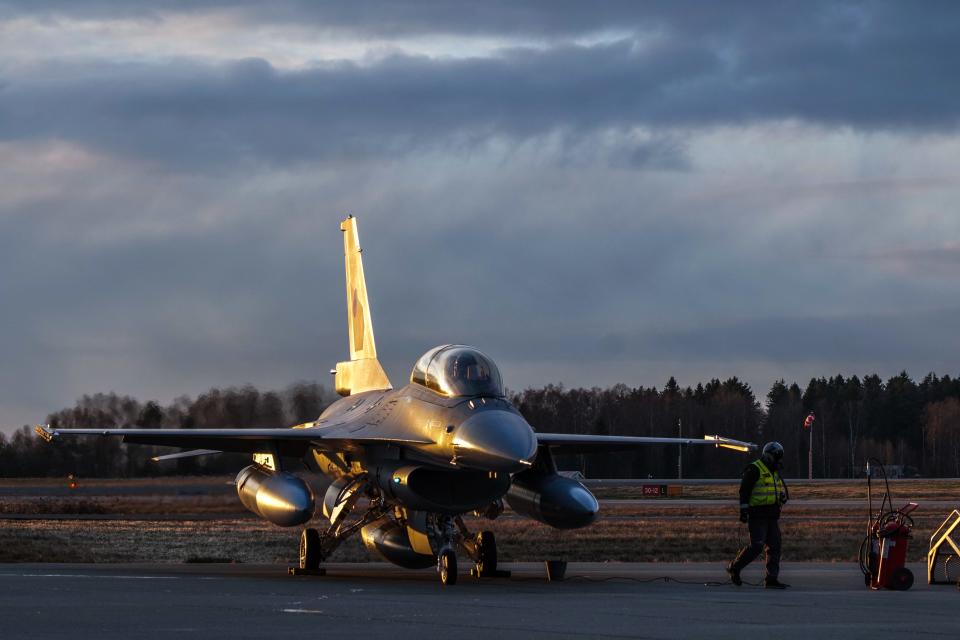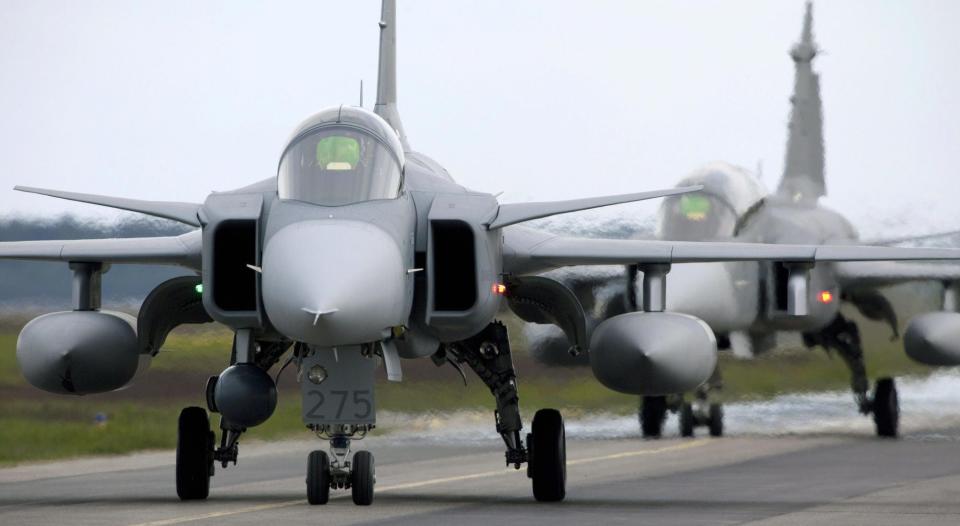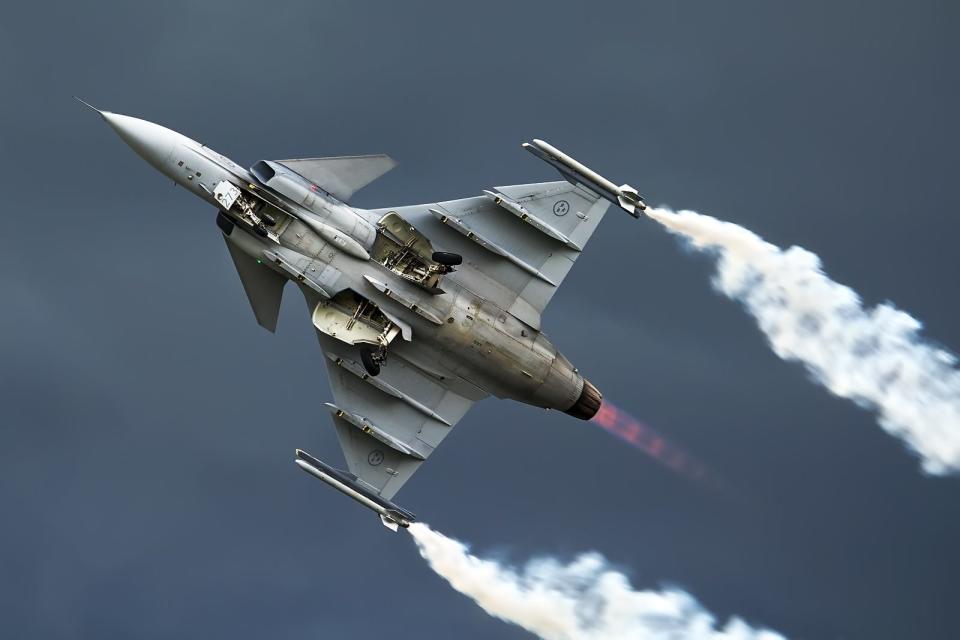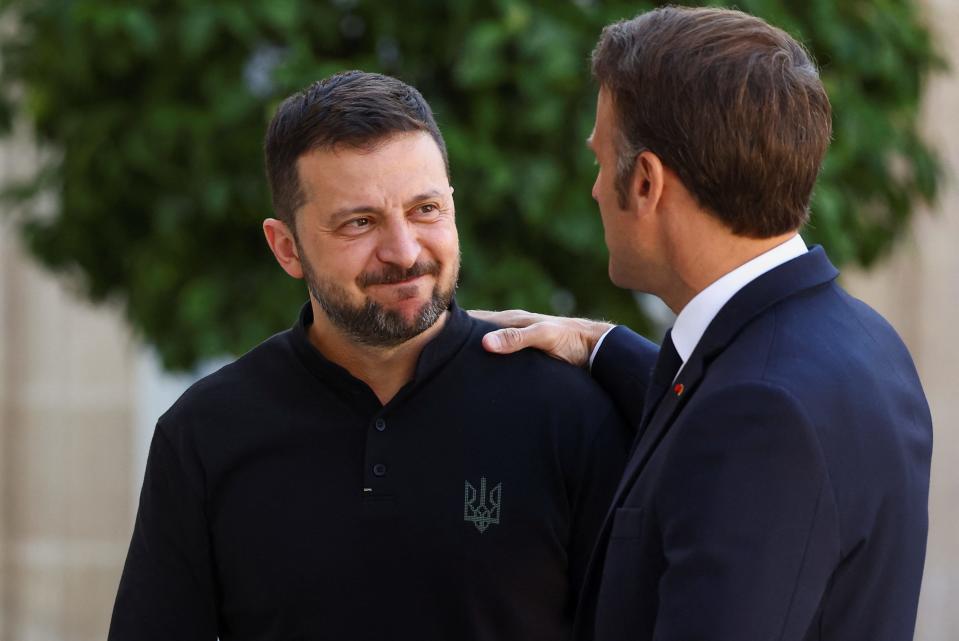Like the F-16, French Mirage 2000-5 fighters are good planes, but they aren't the best Western jets for Ukraine
France announced this week it would send Ukraine Mirage 2000-5 fighter jets.
It's the second warplane that NATO has promised Kyiv, after American-made F-16s.
The Mirage is a good aircraft, but it may not be the one that's best suited for Ukrainian forces.
Ukraine is slated to receive Mirage 2000-5 fighter jets from France in the coming months, adding another aircraft to Kyiv's coming arsenal of Western combat planes.
French President Emmanuel Macron announced Thursday that France will provide Kyiv with the Mirage fighter aircraft after training pilots how to fly the warplanes through a program that will begin this summer. He added that Paris will build a coalition with other countries to supply the jets and that Ukraine could even be flying them by the end of the year.
Macron's announcement comes as Ukraine eagerly awaits the seemingly imminent arrival of American-made F-16s, which will be Kyiv's first Western fighter jet. Four NATO countries promised to send these fighters.
The Mirage 2000-5, like its F-16 counterpart, is a good fourth-generation fighter jet that will bring some additional capabilities to Ukraine's fleet of aging Soviet-era warplanes. But neither aircraft is necessarily the best fit for Kyiv given the current battlefield conditions.
With next-gen systems not even up for discussion, the plane that is most suitable for Ukraine remains Sweden's JAS 39 Gripen. But it is also out of reach, at least for the time being.
Limited air-to-air reach
The Mirage is a multi-role, delta-winged fourth-gen fighter jet manufactured by French company Dassault Aviation. Around 600 of these aircraft have been produced since it was designed in the late 1970s, and they are currently operated by a small number of militaries, including Greece and Taiwan.

Like the F-16, the Mirage 2000s are combat-proven aircraft, having flown sorties in conflicts across the Middle East and in the Balkans.
The 2000-5 variant, which is what France has promised to send Ukraine, first flew in 1990 and, compared to previous versions of the aircraft, features an upgraded radar system. The jet can be equipped with air-to-surface and air-to-air missiles, as well as laser-guided bombs.
Macron told French broadcasters on Thursday that the pilot training will begin this summer and take place in France. The program typically lasts around five to six months, he said, and an undisclosed number of Mirage jets will be transferred to Ukraine following the completion of that training.
Under normal conditions, the French Mirage 2000-5 would be perfectly suitable for a country like Ukraine, but that's just not the situation right now, Justin Bronk, an airpower and technology expert at the UK-based Royal United Services Institute think tank, told Business Insider.
The effectiveness of the Mirage 2000-5 is primarily limited by the MICA beyond-visual-range air-to-air missile, which has a much shorter range than the AIM-120 AMRAAM variants that Kyiv could use with its F-16s, Bronk said.

And the AMRAAM is already an unsatisfactory tool to address Russian air threats near the front lines because Moscow's formidable ground-based surface-to-air missile systems force Ukrainian fighters to fly at relatively low altitudes, putting limitations on the effectiveness of their missiles, Bronk said.
Investing resources to get Ukraine another Western fighter that has an even shorter air-to-air reach won't necessarily improve this dilemma.
The Mirage can carry powerful long-range cruise missiles like the French-made SCALP-EG, but those can also be launched from Ukraine's existing fighter fleet and have already been used to great effect.
Additionally, Bronk said, Ukrainian pilots who are able to be trained quickly on operating and maintaining a system as complex as a fighter jet are also in extremely limited supply. Many of these individuals are already training on the F-16 at sites in Europe and the US.
Doug Birkey, the executive director of the Mitchell Institute for Aerospace Studies, told BI that the Mirage is an "older capability" on par with what Ukraine is getting out of the F-16. Rather than split the focus between aircraft, creating new supply lines, maintenance processes and diverting resources, some NATO partners have argued it might make more sense to simply stick to the F-16.

Like the F-16, the French fighter jet's effectiveness, he said, will ultimately come down to how it's used and whether Kyiv can strike inside Russian territory. Last month, Macron said Ukraine should be allowed to use Western weapons to do so, a stance more NATO countries are taking.
"It's very difficult to try to win and succeed in the campaign when you're largely stuck to defense," Birkey said.
A fighter designed for the Ukraine war
Air warfare experts like Bronk have argued throughout the conflict in Ukraine that the most suitable Western combat aircraft for Ukrainian forces would be Sweden's JAS 39 Gripen.
Built by Swedish defense and aerospace firm Saab, the Gripen is a 4.5-generation multi-role fighter aircraft that has been in production since the 1980s.
The Swedish fighter jet was designed with the idea of a dispersed fighter force taking on Russia without having the benefits of being in NATO and facing a very dangerous surface-to-air missile threat. Essentially, it was designed for the exact conditions in which Ukraine is fighting.
Sweden's Gripen is considered by experts to be a highly capable, effective, and efficient fighter. It is relatively inexpensive to operate, easy to maintain, and requires less runway space than some other aircraft for taking off and landing.
The jet also features advanced electronic-warfare capabilities that were specifically designed to be able to counter the radars on Russian aircraft and ground-based air-defense systems.

Furthermore, the Gripen can be equipped with various air-to-surface missiles and bombs, as well as longer-range air-to-air missiles. Among the latter is the Meteor air-to-air missile, which, with a range of up to 80 miles, delivers a much longer reach than the French MICA and even some Russian weaponry.
Compared to the F-16 and Mirage, the Gripen is far more flexible in terms of operational requirements — especially when it comes to cost and maintenance — and is more resource-efficient.
The downsides of the Swedish aircraft are that it has yet to see combat and is rather limited in availability, unlike the F-16 and its support systems, which are available across Europe.
Sweden previously explored sending Gripens to Ukraine, but those considerations were recently put on hold to allow Kyiv to focus on the F-16. But France has announced its intention to send the Mirage, seemingly contradicting this rationale.
"Why you would then have another non-F-16 fighter being supplied that is less effective for Ukraine's requirements and less well-suited in every way than the Gripen seems slightly odd," Bronk said.
Ukrainian officials have long pushed for the West to provide fighter aircraft, and regardless of any drawbacks, they have expressed their delight publicly over both the F-16 and Mirage pledges.

"French combat aircraft — brilliant fighter jets that, under the control of Ukrainian pilots, will prove that Europe is stronger," Ukrainian President Volodymyr Zelenskyy said during a Friday speech to France's National Assembly, referring to the Mirages.
Until these aircraft arrive, though, Ukraine will have to continue making do with its Soviet-era fleet. For Kyiv, any Western deliveries may prove valuable — regardless of the type of aircraft.
"The best fighter they can get are the ones they can get," Birkey argued. "It still remains that."
France's announcement on its plans to send Mirage fighters comes as Kyiv's partners step up their support for the country in the wake of Russia's new offensive in the northeastern Kharkiv region.
Macron on Thursday also revealed plans to train and equip a brigade of 4,500 Ukrainian soldiers, which will be a significant development and a notable break from some previous training schemes.
"One of the biggest problems that Ukraine is currently facing is a lack of training capacity, particularly the capacity to train at a larger unit level, so battalions and brigades, rather than companies and smaller," Bronk said.

Instead of offering lots of short courses for smaller numbers of troops — a strategy that showed its limitations during Kyiv's failed counteroffensive last summer because it didn't generate officers — the French plan offers a way for Ukrainian troops to train as a unified formation with standardized equipment, Bronk said.
That, he added, "is an incredibly useful and an incredibly well-thought-out way of increasing and stabilizing long-term support. That's really potentially impactful."
Read the original article on Business Insider


